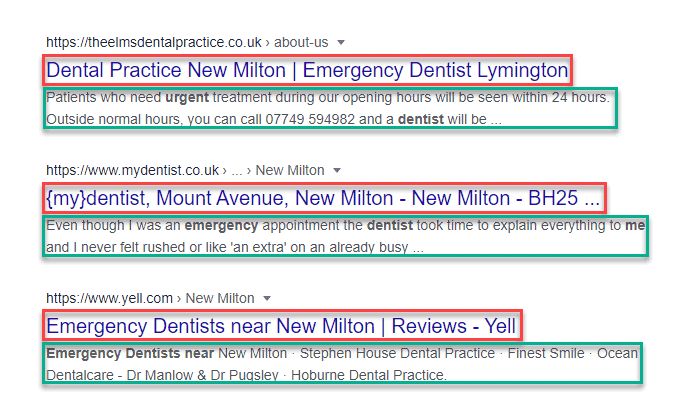You’ve probably heard the “Content is King” idea. This has been a marketing and SEO mantra since the beginning of time.
And it’s no great revelation that quality is more important than quantity. A single well-written blog post every couple of months is inevitably worth more than a weekly rubbish offering.
But before you click away from this post, don’t forget:
You’re going to create more content at some point. How can you make sure that the quality is high?
Especially when you know that quality is subjective. “Good” means different things to people. Right?
So what qualifies as good content?
To quote Haruki Murakami, “If you can’t understand it without an explanation, you can’t understand it with an explanation.”

You’ll know it when you see it (paraphrased)
I like that definition. You’ll know good content when you read it.
If you go searching for a step-by-step guide to taking better photographs, a promotional piece about the latest Nikon camera won’t be what you’re looking for. Neither will an article that repeats the phrase [taking better photographs] hundreds of times.
If, however, the content reads well, if it sounds right, if it feels right, then you’ll know it.
So how do you write content that ranks highly? You write content that deserves to rank highly.
With that in mind, next time you’re about to start working a piece of content, here are nine guidelines for making sure that humans and Google spiders alike think that it deserves to be ranked high.
1 – write original content
Not just in terms of copying and pasting the same article. In terms of creating content that is genuinely original, and provides value to the reader.
If your business sells televisions, then having a web page that simply lists the manufacturer’s information and supplied images is unlikely to rank highly. Almost all of your competition will be copying and pasting this.
Why would visitors or Google think that yours is different?
A unique and detailed review, on the other hand, might stand out, and might provide value.
Writing just a Yet-Another type of article that offers nothing that hasn’t been said many times before is utterly pointless. Yet bafflingly, this has become the norm.
The ignorance of your competition is your opportunity.
2 – write it well
Human visitors are fickle, and if they have to fight your bad grammar, unclear phrasing and unique spelling, then they’re not going to walk away impressed. But they are going to walk away.
If your writing skills are reasonable, then put them to good use. And don’t forget the basic rules. Use a spell checker and carefully proof your work before you publish it.
If, however, you do need help, either refine your skills or outsource them.
There’s no excuse for letting poor writing skills diminish the value of your quality content.
3 – provide what people are actually looking for
In the infinite pool of today’s web, we’re invariably used to low quality and deviousness. Articles that are poorly written, guides that regurgitate other people’s ideas, clever headlines that consistently fail to deliver, and a cheap approximation of quality instead of the real thing.
Using the same example, if a person searches for a step-by-step guide to taking better photographs, it’s clear what they’re looking for.
They want a guide to taking better photographs, probably using clear, step by step instructions.
So, as radical as the idea might seem, the best way to write this is to write a clear, step-by-step guide to taking better photographs.
4 – write it as long or as short as it needs to be (see points at end)
There are so many fascinatingly useless guides on this subject. But the answer to how long content should be is simple: it should be as long or short as it needs to be.
An article on how to use your car’s keyless locking system could probably be written in less than 300 words.
A guide to frying an egg would probably be around 500-600 words.
A basic guide to buying mountaineering equipment would probably be around 2,000 – 4,000 words.
A detailed guide to buying mountaineering equipment could probably be around 15,000 – 20,000 words.
You get the idea.
5 – keep it fresh – permanently (Ts & Cs apply)
One of the holy grails of content creation is to write so-called evergreen content. Content that will be as useful a year or two from now as it was yesterday.
But writing content that truly never degrades is next to impossible, if you aren’t prepared to spend a small amount of time updating it to keep it fresh.
Even if you don’t consider it to be necessarily time sensitive, there are almost certain to be new ideas, theories, systems and references in the future that will help to prolong and maintain a longer cycle of usefulness. Setting even a basic reminder to revisit each piece of evergreen content every 6 months or so could be time well spent.
Having a visible date on content is just one way to make content look dated and irrelevant, even when it may not be.
6 – talk to your audience in their language and tone
We all have and use different voices, according to the person we’re talking to. And this has little to do with the content itself.
For instance, I might explain the reasons for using a password manager very differently to my sisters, parents, friends and colleagues. I’m free for a dinner invitation by the way.
This isn’t a principle that only applies to software and tech. Almost anything will be explained differently according to which lucky person will be listening. And in the case of your products or services, you need to speak in the language of your customers.
Bonus tip: if most people search with questions, then giving them answers (as opposed to explanations) will probably be a good idea as well.
7 – use images that serve a function
Images in text are a good idea. They can be used to break up large sections of text, illustrate what you’re saying, and add colour to the page.
But they also need to be relevant.
If not, they’ll add no value. And stock images that look like stock images tend not to create a favourable impression either.
One other point. I’m still advocating creating content for users over search engine spiders, but having large images that are slow to download is bad for both. See the next point.
8 – for user’s sake make it mobile friendly
Ten years ago, few if any of us regularly accessed the web on a mobile phone. Today it’s become a lot more common, and in fact for some people is the main way they use the web.
Google were ahead of the curve on this, and started pushing their agenda with typical subtlety and emphasis in 2016, with their announcement of mobile-first indexing.
The specifics of what they said don’t matter, but the key takeaway is that Google place a significant emphasis on how a website works on mobile devices. And considering the fact that the use of web on mobile devices is still continuing to grow, this should be a top priority for all websites today. Mobile-friendly is no longer an optional extra.
9 – spend time on the cover (unlike a book – headline, title, description)
We know that we shouldn’t judge a book by its cover, but evidence suggests that many of us do. Even though most of us buy most of our books online, authors and publishers still spend a fair amount of money on design and artwork for a book’s cover. Why? Because it helps sell.
Your web content is no different. When someone goes to Google and searches for emergency dentist near me, for example, the results will look something like this:

The red highlights are (usually) the page title, and the green highlights are (usually) taken from the page’s meta description.
Why usually? Because Google essentially consider it to be an advisory. In other words it’s far from certain that they’ll use it in the search results. But if they do, and if it’s relevant, then a well-crafted and compelling title is more likely to get a click.
Oh and without getting too deep into the murkiness of SEO, the page description isn’t a ranking factor as such, but it can still have an impact on your CTR. So why not?
Look at it as being similar to a well-written newspaper article.
Take the following example; a recent article from the UK’s The Guardian newspaper.
Here are 100 words from the centre of the article:
“When you think about the situation that expeditioners have been exposed to, they are a resilient group of people but this has been a challenging situation for them – potentially traumatic,” Riley told reporters on Tuesday.
“As you can appreciate, some people have been shaken by this.”
The Division’s general manager of operations and safety, Charlton Clark, said the remainder of the voyage will likely not be easy either.
With the Southern Ocean an often unpredictable and challenging environment and unfavourable conditions on the way, there’s still some way to go to get the crew and the expeditioners home safely.
It’s impossible to say what this is about from the sample. All we can work out is that it’s something to do with a problem, apparently on some sort of sea exploration.
But at the top of the article is the headline:
Fire on Australia’s Antarctic resupply vessel leaves expeditioners shaken
This instantly clarifies exactly what the article is about.
Then the first paragraph:
An engine room fire that destroyed two vessels on board Australia’s Antarctic resupply ship has left expeditioners shaken as they begin their journey home.
If The Guardian had used a slightly shortened version of the headline as the title, and the first paragraph as the description, Google would have little difficulty in understanding what the content was about.
So make sure that Google understand your content too.
In fact this is the one single area where optimising for Google is as important as the user.
Here’s the big secret of SEO: Google aren’t as clever as they’d like you to believe. And the fact is that they need your help to understand what your content is actually about.
The one rule to rule them all: writing for search engines vs human visitors
By now you should see that this is easy.
Write for humans. Always.
Remember that Google aren’t looking for content for their spiders; they’re looking for content for human beings.
If you write good content, and write it well for people, you’re probably already halfway there with your SEO efforts.
Unique ideas for your business
The Demystifier puts practical ideas into your hands. You won't find them elsewhere. Original, actionable and insanely effective.




